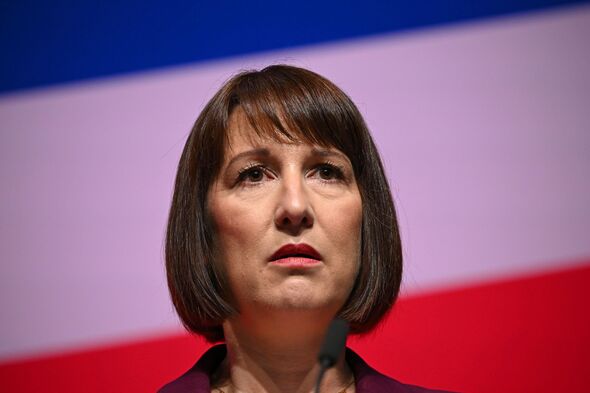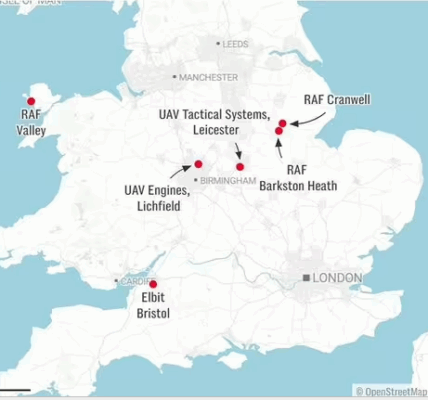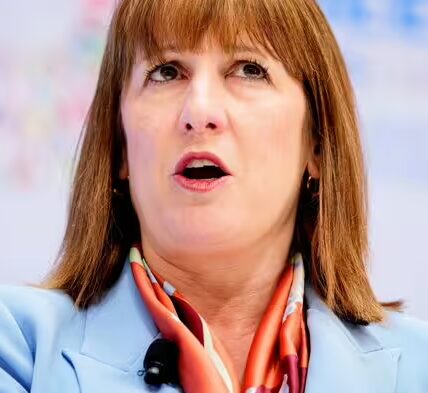Nearly half a century after it first appeared on a handful of billboards, it remains one of the most iconic political adverts ever.
The picture of a long queue of people meandering away from the dole office and the simple but devastating message: Labour isn’t working.
It enraged the Labour government, with then Chancellor Denis Healey claiming with disdain that the Tories were “selling politics like soap powder”.
But the poster, which started the 1979 general election campaign that would propel Margaret Thatcher into Downing Street just months later, hurt for another reason: It was true.
The Labour government of the late 1970s was stricken by industrial unrest, high inflation, low growth – and a problem with unemployment that would never go away.
The poster should be keeping the current incumbent in the Treasury Rachel Reeves awake at night, because unemployment is the real-life consequence of Labour’s incompetence with the economy and disregard for business.
And it has always been the case.

LABOUR ISN’T WORKING The 1978 image of a snaking queue of people leading to an unemployment office (Image: -)
Remarkably, every Labour administration with one exception has seen unemployment rise over the course of its time in power.
In March 1974 when Harold Wilson became Prime Minister unemployment was at 3.6%. By time he was kicked out in May 1979, unemployment had risen nearly 2% to 5.3%
When Tony Blair came to power in May 1997 unemployment was 7.2% – by the time the Conservative-Liberal Democrat coalition got into Downing Street in May 2010, the rate had risen to 7.9%.
The current system for assessing unemployment only goes back to 1971, but other measurements of those out of work (such as the number registered as unemployed or seeking work) tell the same story for Labour regimes in 1929-31 (when unemployment effectively doubled to around 20%), 1945-51 and 1964-70.
The one outlier was Ramsay Macdonald’s minority government between January and November 1924 – so more than a century ago. It is also worth noting that unemployment was still at a damagingly high 10.8% (down from 11.9%) at the time of the election.
Of course, history does not have to repeat itself. But barely six months into Keir Starmer’s premiership, the signs are already there that rising, persistent unemployment will be the legacy of his government.
And although all the talk from Labour is of going for growth, cutting regulation and building infrastructure and housing to boost the economy, the fact is that this is an economically illiterate regime with a lack of understanding of business and what makes it tick.
It’s a poisonous chalice Labour has concocted for itself and much of it goes back to last autumn’s Budget.
Labour, having promised not to raise National Insurance or Income Tax on “working people”, instead thought it was fine to pile taxes and costs on to business.
Bafflingly, Labour assumed that the hike in employers’ National Insurance contributions, an inflation-busting rise in the minimum wage, higher business rates would have no impact on how firms operate and invest. And bosses fear a raft of new pro-worker employment rights that will make hiring new staff much more risky.
The country’s stuttering growth inevitably leads to firms cutting back and laying off staff.
Official statistics from earlier this month show the jobless rate increased to 4.4% in the three months to November, up from 4.3% in the three months to October. But dig deeper and there are genuine reasons for alarm.
The Office for National Statistics estimated that the number of payrolled employees had dropped by 47,000 in December, the biggest fall since November 2020.
Vacancies for permanent jobs in the UK are declining at their fastest rate for four years, consultants KPMG found last month. It said the biggest decline in vacancies was seen in the executive/professional and the IT and computing sectors.
The danger signs are everywhere. Retail has already seen thousands of jobs go since the start of the year and the major chains have warned that 300,000 jobs – around one in 10 of those working in the sector – will go over the next three years. And the blame is very much being laid at the door of “Rachel from Accounts”.
Marks and Spencer’s boss Stuart Machin warned the sector was being “raided like a piggy bank”.
The hospitality and leisure sector is on its knees, banking is expecting more branch closures and redundancies across the board.
The Confederation of British Industry has warned businesses are “seriously flagging under the fiscal burden it had to shoulder at the Budget”.
Bank of England policymaker Catherine Mann recently forecast a “further loosening of the labour market” in 2025, partly driven by extra company taxes announced in the October budget.
She added: “Already, the labour market has all but stopped adding jobs with employment nearly flat.”
And the public sector and charities are not immune with mass redundancies expected in the university sector, local government and across a host of not-for-profit organisations and groups.
Even in the last few days we have seen the Federation of Small Business say that business confidence is at its lowest since the pandemic and the Chartered Institute of Personnel and Development warn that one in three firms will cut staff or halt recruitment because of higher costs.
And it leaves Reeves and Labour in a world of pain. Fewer people working means less tax revenue coming in. The Government already has little room for manoeuvre with its financial plans so that means cuts to public services or yet more taxes on business or workers.
And fewer people working also means they have less money to spend. It is a vicious cycle which means less demand for goods and services, more problems for businesses and more redundancies.
The headache for Reeves is entirely of her own and Labour’s making but it is possible to have some sympathy with the working world she has inherited.
The world economy is struggling for reasons outside her control and we await to see the effects of Donald Trump’s liberal use of tariffs on international trade.
And the truth is that Britain has fallen out of love with working life, particularly since covid.
So while the unemployment figures suggest there are around 1.5million who want a job but cannot get one, there are another 9.3million who are working-age people who are not actively looking for work or are not available to work.
A good chunk of these are students or carers. But more than 2.5million are not working because of sickness (with increasing numbers off work because of mental health issues) while 1.2million aged between 50 and 64 have retired early.
If Reeves wants to increase her tax revenue, the only way is to get more people back into work.
Can she do it? Labour isn’t working yet – many doubt it ever will, but it will need fundamental change to even give it a chance.





